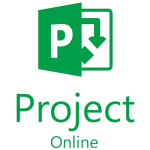In today’s fast-paced business environment, it’s crucial to have an effective Enterprise Project Management Office (EPMO) that can help manage projects, portfolios, and resources. As a professional copywriting journalist, I will explore the essential PPM capabilities and features required for an enterprise EPMO. Understanding these PPMapabilities and features can enhance your organization’s ability to execute strategies, measure performance, mitigate risks, and achieve success.
Key Takeaways:
- Enterprise EPMOs require specific PPM capabilities and features to effectively manage projects, portfolios, and resources.
- The right PPM capabilities and features can lead to efficient project delivery and maximize the value of investments.
- Effective portfolio management is vital for an enterprise EPMO to align projects with strategic goals, optimize resource allocation, and manage risks.
- Proactive performance measurement and reporting can identify areas for improvement and make data-driven decisions to optimize outcomes.
- Leveraging tools like Microsoft Project Online and Microsoft Office 365 can enhance productivity and streamline project execution.
The Importance of a Robust Project Management System
As the first step in understanding the PPM capabilities and features required for an enterprise EPMO, it is essential to recognize the significance of having a robust project management system. Project management is the foundation that supports the planning, execution, and control of projects, and without it, an EPMO cannot effectively manage projects, portfolios, and resources.
At the core of a robust project management system are the right capabilities and features. These features enable efficient project delivery and maximize the value of investments. Let’s explore some of the critical capabilities and features necessary for effective project management:
- Time savings: A streamlined project management system should allow for time-saving capabilities, such as templates, reusable components, and automation. These features can significantly reduce the time required for project planning, execution, and reporting, enabling faster and more frequent project deliveries.
- Dynamic scheduling: A dynamic scheduling feature enables project managers to continually adjust project schedules to reflect changes in timelines, resources, and priorities. This capability ensures that project plans remain up-to-date and that resources are used efficiently, ultimately resulting in successful project outcomes.
- Resource management: Resource management is a critical feature of a project management system. It allows organizations to ensure that resources are allocated optimally, and workloads are balanced evenly across the organization. Effective resource management leads to better project outcomes and higher chances of success.
Overall, a robust project management system is crucial for an enterprise EPMO to effectively manage projects, portfolios, and resources. By leveraging the right capabilities and features, such as time savings, dynamic scheduling, and resource management, organizations can ensure efficient project delivery and maximize the value of their investments.
The Importance of Streamlining Portfolio Management for Effective Governance
As an Enterprise Project Management Office (EPMO), one of the crucial responsibilities is portfolio management. This involves selecting and managing various projects to achieve organizational goals. A robust portfolio management system enables an EPMO to prioritize projects, allocate resources and manage risks. Portfolio management ensures that the projects selected are aligned with the long-term strategic objectives of the organization. It allows the EPMO to optimize and allocate resources, which enhances the chances of project success. Effective portfolio management is also important for risk management, especially in complex organizational structures.
However, not all EPMOs have the same capability in portfolio management, which can lead to suboptimal outcomes. To overcome this challenge, it is essential to implement the right capabilities and features to enhance portfolio management. The following are some of the essential capabilities and features that can help in streamlining portfolio management and governance:
PPM Capabilities
- Demand Management: The ability to align the project portfolio with strategic objectives, ensuring that the projects selected are in line with the organization’s goals.
- Portfolio Prioritization: The ability to prioritize projects based on their value and the strategic objectives they align with, ensuring that resources are allocated to high-value projects first.
- Resource Optimization: The ability to optimize resource allocation to achieve maximum value and increase the chances of project success.
Features
Features play a crucial role in enhancing the PPM capabilities of the EPMO. Some of the essential features that can enhance portfolio management and governance include:
- Portfolio Dashboard: This provides a high-level view of the portfolio, enabling the EPMO to monitor performance and track progress against objectives.
- Portfolio Analysis: This feature enables the EPMO to analyze the portfolio based on various criteria, such as risk, value, and strategic alignment.
- Portfolio Reporting: This feature enables the EPMO to generate reports on the portfolio’s performance, providing insights that can drive continuous improvement.
- Portfolio Governance: This feature enables the EPMO to establish the right governance framework for project selection, resource allocation, and risk management. Governance is vital to ensure that the portfolio aligns with organizational goals and objectives.
By implementing the right PPM capabilities and features, an EPMO can streamline portfolio management, improve governance, and increase the chances of project success. Effective portfolio management is essential for achieving long-term strategic goals and ensuring that the organization invests in the right projects.

Executing Strategy with Precision
Strategy execution is the cornerstone of an enterprise EPMO. With the right PPM capabilities and features, organizations can ensure that projects are aligned with their strategic objectives and executed with precision.
One essential capability for strategy execution is strategic planning. This involves defining the organization’s strategy, establishing clear goals and objectives, and defining the steps required to achieve them. With the right features, such as the ability to track progress and adjust plans as needed, organizations can ensure that their projects are always in line with their overarching strategy.
Another critical capability for strategy execution is performance measurement. By tracking key performance indicators (KPIs), organizations can assess progress towards their goals and identify areas for improvement. This capability enables leaders to make data-driven decisions and adjust their strategy as needed to optimize outcomes.
Features for Strategy Execution
There are several features that are essential for effective strategy execution:
- Alignment Tracking: This feature enables organizations to track progress towards their strategic goals and identify areas where projects are not aligned with the overall strategy.
- Performance Measurement: This feature allows organizations to track KPIs and measure progress towards their goals.
- Portfolio Planning: This feature enables organizations to align projects with their strategic objectives and prioritize projects based on their potential impact.
- Project Visualization: This feature allows organizations to visualize their project plans and identify potential issues before they occur.
By utilizing these PPM capabilities and features, organizations can ensure that their projects are executed with precision and aligned with their strategic objectives, leading to increased chances of success.
PPM Capabilities: Proactive Performance Measurement and Reporting
Performance measurement and reporting are critical in every project management initiative. They offer insights into how well the project is performing, identify weak spots, and highlight areas for improvement.
Efficient performance measurement and reporting depend on specific PPM capabilities and features. For instance, real-time dashboards present performance metrics, such as earned value, cost variance, and schedule variance, in a visually engaging manner, enabling stakeholders to get timely updates on the project status. Similarly, analytics tools like Power BI enable data-driven decision-making, using data from various sources, such as Excel spreadsheets and SharePoint lists. This way, the EPMO can adjust project performance in real-time and take corrective actions to minimize the impact of risks and issues.
Key Performance Indicators (KPIs)
Performance measurement and reporting rely on specific metrics, known as Key Performance Indicators (KPIs). These KPIs assess project performance and provide insights into how well the project aligns with the strategic goals of the organization. KPIs can be quantitative or qualitative and should be customized to fit the specific needs of the organization. Some of the most common KPIs include:
- Project schedule adherence
- Budget variance
- Scope creep
- Resource utilization
- Customer satisfaction feedback
The right PPM capabilities and features enable organizations to define and measure KPIs effectively, track project performance, and demonstrate the value of the EPMO to stakeholders. By understanding the performance metrics, organizations can make data-driven decisions and adjust their project management approach to achieve optimal outcomes.
Efficient Resource Management for Optimal Utilization
Resource management is one of the critical PPM capabilities required for an enterprise EPMO to deliver successful projects. An efficient EPMO resource management system ensures that the necessary resources are available, correctly allocated, and utilized to their maximum potential.
By utilizing the right features and capabilities, such as demand forecasting, capacity planning, and resource optimization, organizations can gain a competitive edge in project execution. Capacity planning enables organizations to estimate the resources required for upcoming projects, while demand forecasting ensures that the required resources are available to execute projects properly. Resource optimization ensures that resources are efficiently utilized across multiple projects, preventing underutilization or overutilization of resources.
An effective resource management system also allows for the balancing of workloads, ensuring that resources are not overburdened. The utilization rate must be optimized based on the resources’ skill set, experience, and availability. Resource allocation is a critical aspect of resource management, ensuring that the right resources are assigned to the appropriate projects, resulting in successful project completion while meeting the expected quality standards.
| PPM Capabilities | Features |
|---|---|
| Resource Forecasting | Estimating the resources required for upcoming projects |
| Capacity Planning | Ensuring that the required resources are available to execute projects properly |
| Resource Optimization | Ensuring that resources are efficiently utilized across multiple projects, preventing underutilization or overutilization of resources |
A successful EPMO aims to optimize resource utilization by balancing workloads and allocating resources efficiently. Resource management is one of the EPMO’s primary functions, and implementing the right features and capabilities is crucial to maximize its efficiency.
Section 7: Mitigating Risks with Proactive Risk Management
Risk management is an essential aspect of an enterprise EPMO. By proactively identifying potential risks and developing mitigation strategies, organizations can minimize their impact on project outcomes. At the same time, certain PPM capabilities and features can enhance risk management practices, ensuring optimal project success rates. Some of the most valuable PPM capabilities and features for risk management in an EPMO include:
| Capability/Feature | Description |
|---|---|
| Risk identification | Enables organizations to systematically identify potential risks across the project lifecycle, from planning to execution. |
| Risk assessment | Allows organizations to evaluate the likelihood and impact of each potential risk, helping prioritize mitigation efforts. |
| Risk mitigation strategies | Enables organizations to develop effective mitigation strategies that reduce the likelihood or impact of identified risks. |
By leveraging these capabilities and features, an enterprise EPMO can establish a robust risk management framework, significantly reducing the risk of project failure. In turn, this supports the EPMO’s ability to execute strategies, measure performance, and optimize resource utilization.
At the same time, it is essential to ensure that risk management practices are consistently updated and adjusted as needed throughout the project lifecycle. This requires organizations to establish a culture of continuous improvement and learning that facilitates the identification of new risks and the refinement of mitigation strategies.
Ultimately, proactive risk management is a key capability for any enterprise EPMO. By prioritizing risk identification, assessment, and mitigation, organizations can optimize their project outcomes and achieve greater success over the long term.
Driving Cost Savings through Effective Management
In any enterprise EPMO, cost savings are essential for achieving better financial performance. Through effective project and resource management, organizations can optimize their spending and identify cost-saving opportunities. This requires several capabilities and features that I will explore in this section.
Capabilities
One of the critical capabilities for achieving cost savings is accurate budget tracking. With this feature, project managers can keep track of expenses and ensure that projects stay within budget limits. Additionally, cost estimation capabilities provide insights into the anticipated cost of a project, allowing for better planning and allocation of resources.
Resource optimization is another essential capability that can help to reduce costs. By accurately forecasting resource needs, project managers can avoid overstaffing and ensure that resources are utilized efficiently. Capacity planning capabilities can also help to prevent bottlenecks and ensure that resources are appropriately allocated.
Features
| Feature | Description |
|---|---|
| Budget Tracking | Tracks project expenses to ensure they stay within budget limits |
| Cost Estimation | Provides insights into the anticipated cost of a project |
| Resource Forecasting | Accurately predicts resource needs to avoid overstaffing |
| Capacity Planning | Prevents bottlenecks and ensures resources are allocated appropriately |
Effective financial analysis is another critical feature for achieving cost savings. Analyzing project financials and identifying areas where costs can be reduced can help to optimize spending and improve overall financial performance.
Automated reporting capabilities can also help to reduce costs by streamlining reporting processes and eliminating manual effort. Reporting dashboards can provide real-time insights into project performance, enabling stakeholders to make informed decisions and take prompt actions.
Conclusion
By implementing the right capabilities and features, organizations can drive significant cost savings in their enterprise EPMO. Accurate budget tracking, cost estimation, resource forecasting, capacity planning, financial analysis, automated reporting, and reporting dashboards are just some of the capabilities and features that can help to optimize spending and improve financial performance.
Leveraging Microsoft Project Online and Microsoft Office 365
When it comes to driving successful project management, portfolio management, and resource management, two essential tools that every enterprise EPMO must explore are Microsoft Project Online and Microsoft Office 365. These tools provide a wide range of capabilities and features that can help organizations enhance their project execution capabilities, enable collaboration, and improve productivity.
Microsoft Project Online is a cloud-based tool that enables organizations to manage projects, portfolios, and resources in real-time. This tool offers a range of features, including:
- Dynamic scheduling
- Resource management
- Time savings
- Budget tracking
- Reporting
With the integration of Microsoft Project Online with Microsoft Office 365, organizations can leverage a suite of applications that facilitate collaboration, document sharing, and communication. These apps include:
- Microsoft Teams
- Microsoft Outlook
- Microsoft SharePoint
- Microsoft Power BI
- Microsoft Excel
The combination of Microsoft Project Online and Microsoft Office 365 provides a powerful toolset that can help organizations improve their EPMOs. With these capabilities and features, organizations can drive better project outcomes, optimize resource utilization, minimize risks, and achieve their goals faster and more efficiently.
The Benefits of Roadmaps in EPMO
One of the most important tools for an enterprise EPMO is a roadmap. As a visual representation of project plans, timelines, and dependencies, roadmaps provide stakeholders with a clear understanding of project goals and how they will be achieved. This section will explore the capabilities and features of PMO roadmaps and the benefits they bring to organizations.
Capabilities and Features
PMO roadmaps offer a range of capabilities and features that enhance project management, including:
| Capabilities | Features |
|---|---|
| Strategic Planning | Visual representation of project plans |
| Communication | Clear and concise project status updates |
| Collaboration | Alignment of stakeholders and resources |
With these capabilities and features, PMO roadmaps offer a comprehensive solution for managing complex projects in an enterprise EPMO.
PMO Benefits
PMO roadmaps bring a range of benefits to organizations, including:
- Improved transparency and visibility into project progress
- Enhanced collaboration and communication among stakeholders
- Increased alignment of resources with project goals
- Facilitation of strategic planning and decision-making
Overall, PMO roadmaps help organizations achieve their desired outcomes by providing a clear, concise, and collaborative approach to managing projects.
Key Performance Indicators (KPIs) for EPMO Success
As I mentioned earlier, KPIs play a crucial role in measuring the success of an EPMO. By establishing and tracking KPIs, organizations can monitor project performance, identify areas for improvement, and demonstrate the value of the EPMO to stakeholders. In this section, I will explore some essential PMO and EPMO KPIs that you should consider tracking.
PMO KPIs
PMO KPIs are metrics that measure the performance of the Project Management Office as a whole. Here are some examples:
| KPI | Description |
|---|---|
| Project Success Rate | The percentage of projects that have been completed on time, within budget, and to the satisfaction of stakeholders. |
| Portfolio ROI | The financial return on investment for the entire project portfolio. |
| Resource Utilization | The percentage of available resources that are being utilized on projects. |
| Customer Satisfaction | The level of satisfaction of customers with the PMO’s service delivery. |
EPMO KPIs
EPMO KPIs are metrics that measure the performance of the Enterprise Project Management Office specifically. Here are some examples:
| KPI | Description |
|---|---|
| Strategic Alignment | The percentage of projects aligned with strategic goals. |
| Project Pipeline Health | The ratio of approved projects in the pipeline to the total number of projects submitted. |
| Resource Capacity | The percentage of total resource capacity being utilized. |
| Portfolio Health | The overall health of the project portfolio, including factors such as risk, cost, and schedule performance. |
Tracking these KPIs can help you identify areas of improvement, demonstrate the value of the EPMO, and ultimately drive better project outcomes. To track these KPIs, organizations need the right capabilities and features in their EPMO solution.
For example, Microsoft Project Online provides reporting capabilities that can help you track KPIs like project success rate, portfolio ROI, and resource utilization. Power BI, an analytics tool included in Microsoft Office 365, can help you visualize and analyze your KPI data in real-time.
By leveraging these capabilities and features, you can ensure that your EPMO is on track to achieve success and deliver value to your organization.
Conclusion
In conclusion, it is crucial for an enterprise EPMO to have the right capabilities and features to achieve successful project management, portfolio management, strategy execution, performance measurement, resource management, risk management, and cost savings. By leveraging tools like Microsoft Project Online and Microsoft Office 365, creating strategic roadmaps, and tracking key performance indicators (KPIs), organizations can enhance their EPMOs and achieve their desired outcomes.
It is essential to remember that with the right capabilities and features, an enterprise EPMO can provide a comprehensive understanding of projects, portfolios, and resources, enabling efficient execution of strategies, performance measurement, and risk mitigation. Hence, it is necessary to identify the necessary capabilities and features and implement them to unlock the full potential of an EPMO.
In conclusion, having an effective EPMO can help organizations operate more effectively in today’s dynamic landscape. By embracing the right tools and capabilities, organizations can achieve project success, drive cost savings, and deliver value to stakeholders.
What Type of Training Do You Need?
Individual and Small Group Training
OnDemand Training at your own pace
Starting at $399

OnDemand Training

Microsoft Project Standard Desktop Training

Microsoft Project Professional Desktop for Project Online Training

Microsoft Project Professional Desktop for Project Server Training

Templates, Student Hand Outs, Tips and Tricks

Certificate of Completion
Medium & Large Group Training
Onsite, Virtual or OnDemand Training
Contact Us for Discounts

Microsoft Project Standard Desktop Training

Microsoft Project Professional Desktop for Project Online Training

Microsoft Project Professional Desktop for Project Server Training

Templates, Student Hand Outs, Tips and Tricks

Certificate of Completion

Automated Training Progress Report
FAQ
What is an EPMO?
An EPMO stands for Enterprise Project Management Office. It is a centralized department or unit within an organization that is responsible for overseeing and managing projects, portfolios, and resources at an enterprise level.
Why is a robust project management system important for an EPMO?
A robust project management system provides the framework for planning, executing, and controlling projects. It helps organizations ensure efficient project delivery, maximize the value of their investments, and achieve project success.
How does portfolio management streamline governance?
Portfolio management helps align projects with strategic goals, optimize resource allocation, and manage risks. It enables organizations to make informed decisions, establish proper governance, and achieve optimal project outcomes.
How does an EPMO execute strategies with precision?
An EPMO utilizes capabilities and features that enable strategic planning, performance measurement, and alignment tracking. This ensures that projects are implemented in line with strategic objectives, leading to better decision-making and increased chances of success.
How does a proactive performance measurement and reporting approach benefit an EPMO?
By focusing on proactive performance measurement and reporting, an EPMO can monitor project performance, identify areas for improvement, and make data-driven decisions. This approach helps optimize project outcomes and enhance overall performance.
Why is efficient resource management important for an EPMO?
Efficient resource management allows an EPMO to allocate resources effectively, balance workloads, and avoid bottlenecks. With capabilities and features like resource forecasting and capacity planning, organizations can ensure optimal resource utilization and enhance project success rates.
How does proactive risk management help an EPMO?
Proactive risk management enables an EPMO to identify potential risks early on, develop contingency plans, and minimize the impact of risks on project outcomes. This approach helps mitigate risks and improve project success rates.
How can effective management drive cost savings for an EPMO?
Effective project and resource management enable an EPMO to identify cost-saving opportunities, optimize spending, and improve overall financial performance. With capabilities and features that enable budget tracking and financial analysis, organizations can drive significant cost savings.
What are the benefits of leveraging Microsoft Project Online and Microsoft Office 365 for an EPMO?
Microsoft Project Online and Microsoft Office 365 offer collaborative project management, document sharing, real-time updates, and integration with other Microsoft applications. These capabilities enhance productivity, streamline project execution, and improve communication within the EPMO.
How do roadmaps benefit an EPMO?
Roadmaps provide a visual representation of project plans, timelines, and dependencies. With capabilities and features like thepmoroadmap.com, organizations can create strategic roadmaps, communicate project progress, and align stakeholders. This leads to improved project transparency, collaboration, and overall success.
What are key performance indicators (KPIs) for EPMO success?
Key performance indicators (KPIs) help measure EPMO success. By utilizing capabilities and features that enable KPI tracking, organizations can monitor project performance, identify areas of improvement, and demonstrate the value of the EPMO to stakeholders.
Author Profile

Latest Entries
 PMO RoadmapsOctober 3, 2025Resource Manager Benefits with Project Server
PMO RoadmapsOctober 3, 2025Resource Manager Benefits with Project Server PMO RoadmapsOctober 2, 2025Benefits of Project Server for Project Managers
PMO RoadmapsOctober 2, 2025Benefits of Project Server for Project Managers ConsultingMay 21, 2024Startup Recommendations: Why Use Microsoft Project Online and Office 365
ConsultingMay 21, 2024Startup Recommendations: Why Use Microsoft Project Online and Office 365 Project OnlineApril 2, 2024The Ultimate Guide: Benefits of Microsoft Project Online for Finance
Project OnlineApril 2, 2024The Ultimate Guide: Benefits of Microsoft Project Online for Finance







